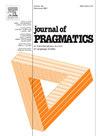Different ways of deriving majority judgements: An experimental study of Chinese dabufen
IF 1.7
1区 文学
0 LANGUAGE & LINGUISTICS
引用次数: 0
Abstract
This study experimentally investigates the interpretations of the Chinese majority expression dabufen, testing competing approaches to majority quantification. Majority expressions are typically analyzed as generalized quantifiers or superlative adjectives. However, our corpus-based investigation reveals that neither analysis can fully account for certain properties of dabufen, particularly its ability to associate with proportions below 50%. To address this gap, we propose a comparative approach, deriving majority judgements through comparison with a standard that can be contextually sensitive.
The findings from our experiment further validate the comparative approach while highlighting the inadequacy of the existing approaches. Specifically, our experiment reveals a population split among native speakers: the “Rigid Cluster”, which adheres to the above-50% interpretation, and the “Flexible Cluster”, which accepts below-50% uses across various contexts. Within the Flexible Cluster, we further identify subclusters that use dabufen to express superlativity relativized to the whole partition or to compare with a contextually salient proportion. The inter-cluster differences reflect the participants’ varying ways of determining the standard of comparison.
By uncovering the interpretational variability of dabufen, this research expands the understanding of majority quantification in natural language. It demonstrates that the conceptual category of ‘majority’ can be realized in diverse ways—both within a single language and across languages—and underscores the theoretical value of experimentally exploring majority expressions.
多数判断的不同方法:汉语大不分的实验研究
本研究对汉语多数人表达“大不分”的解释进行了实验研究,测试了多数人量化的不同方法。多数表达通常作为广义量词或最高级形容词来分析。然而,我们基于语料库的调查显示,这两种分析都不能完全解释大布芬的某些特性,特别是它与50%以下比例的关联能力。为了解决这一差距,我们提出了一种比较方法,通过与上下文敏感的标准进行比较来得出多数判断。我们的实验结果进一步验证了比较方法,同时突出了现有方法的不足之处。具体来说,我们的实验揭示了母语人士之间的人口分裂:“刚性群体”坚持50%以上的解释,而“灵活群体”接受不同语境下50%以下的使用。在柔性聚类中,我们进一步确定了使用大不分来表达相对于整个分区的最高级或与上下文显著比例进行比较的子聚类。集群间差异反映了参与者确定比较标准的不同方式。通过揭示大不分的解释变异性,本研究扩展了对自然语言中多数量化的理解。它表明,“多数”的概念范畴可以通过多种方式实现——无论是在单一语言中还是在跨语言中——并强调了实验探索多数表达的理论价值。
本文章由计算机程序翻译,如有差异,请以英文原文为准。
求助全文
约1分钟内获得全文
求助全文
来源期刊

Journal of Pragmatics
Multiple-
CiteScore
3.90
自引率
18.80%
发文量
219
期刊介绍:
Since 1977, the Journal of Pragmatics has provided a forum for bringing together a wide range of research in pragmatics, including cognitive pragmatics, corpus pragmatics, experimental pragmatics, historical pragmatics, interpersonal pragmatics, multimodal pragmatics, sociopragmatics, theoretical pragmatics and related fields. Our aim is to publish innovative pragmatic scholarship from all perspectives, which contributes to theories of how speakers produce and interpret language in different contexts drawing on attested data from a wide range of languages/cultures in different parts of the world. The Journal of Pragmatics also encourages work that uses attested language data to explore the relationship between pragmatics and neighbouring research areas such as semantics, discourse analysis, conversation analysis and ethnomethodology, interactional linguistics, sociolinguistics, linguistic anthropology, media studies, psychology, sociology, and the philosophy of language. Alongside full-length articles, discussion notes and book reviews, the journal welcomes proposals for high quality special issues in all areas of pragmatics which make a significant contribution to a topical or developing area at the cutting-edge of research.
 求助内容:
求助内容: 应助结果提醒方式:
应助结果提醒方式:


